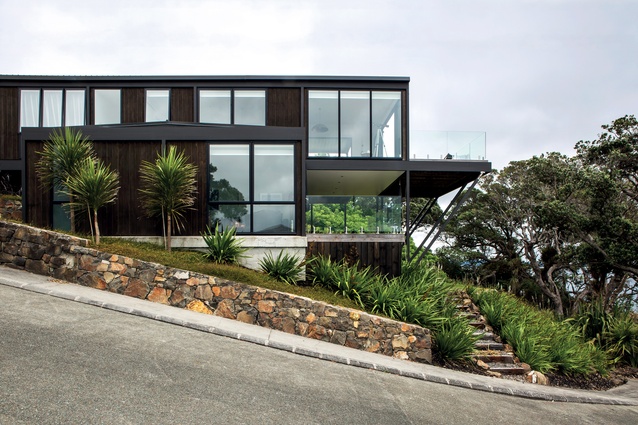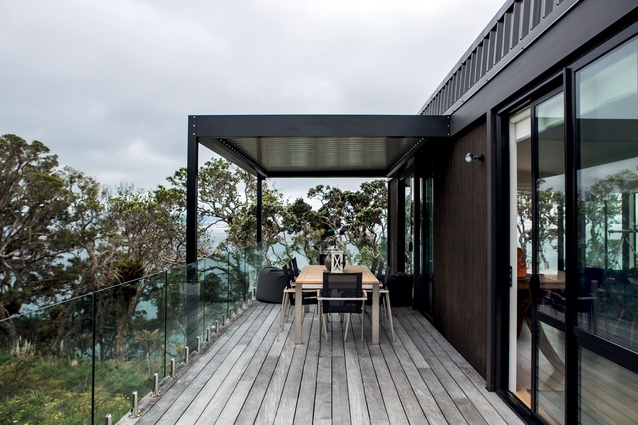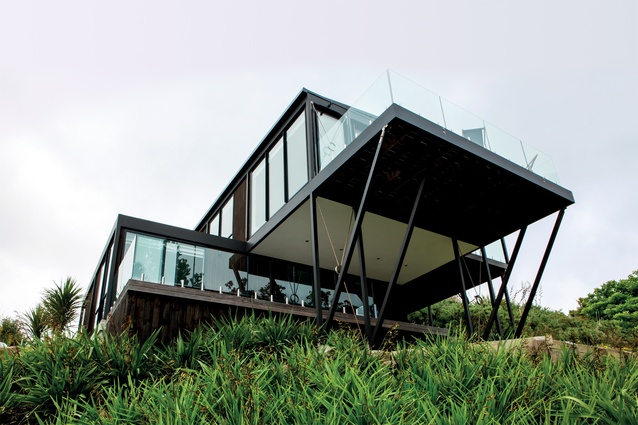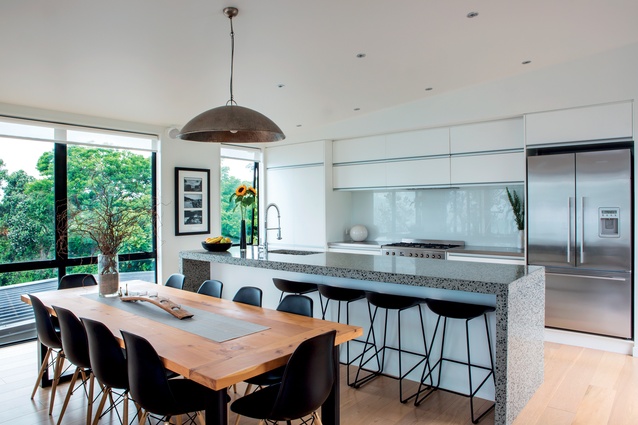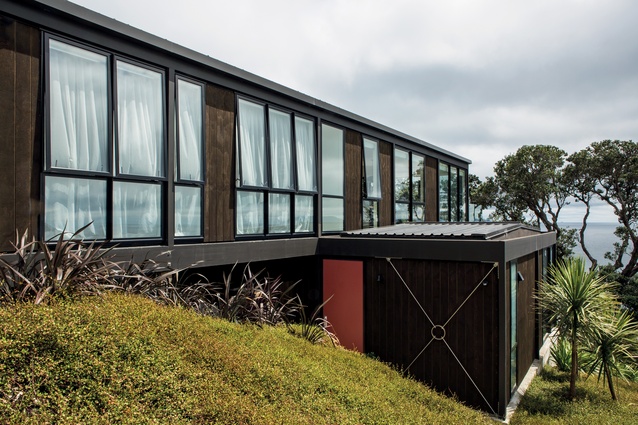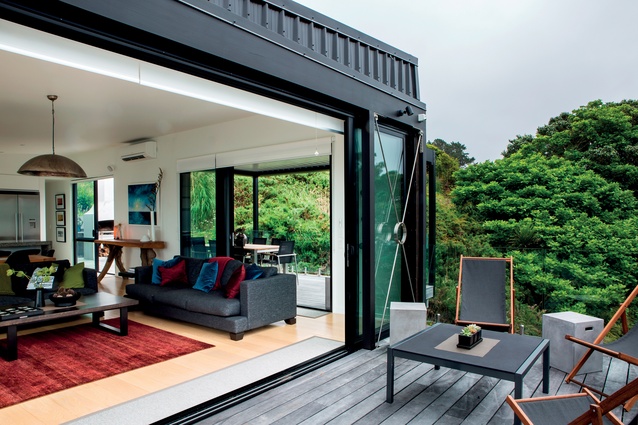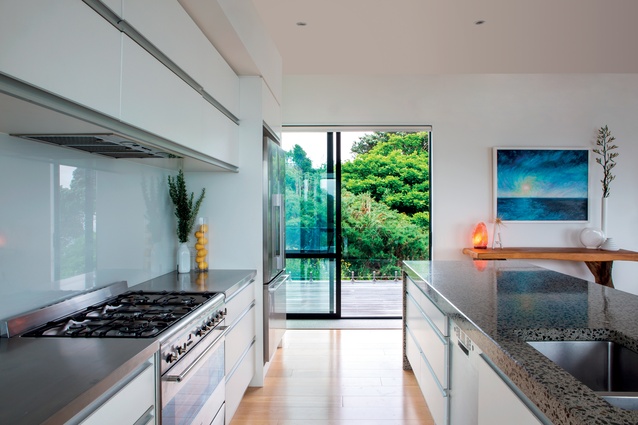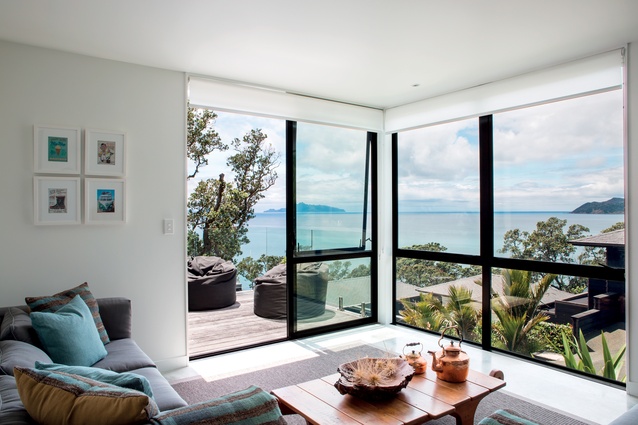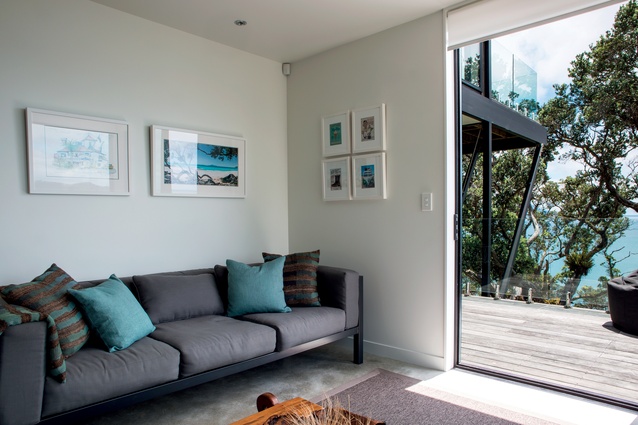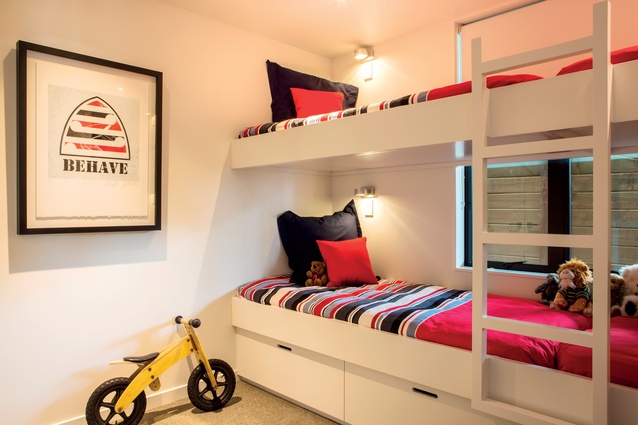Houses revisited: Langs Beach House
Two houses in one. That’s what Judy Ford was after when she built on this covetable Langs Beach section north of Auckland. “This particular piece of land really spoke to us,” she says. “And I liked the fact it was within a gated community, which offered more privacy and security.” First published in 2015.
Ford is a busy woman. A fashion manufacturer who designs her own range that’s sold throughout New Zealand, she’s equally committed to spending quality time with her three boys and their partners as well as her two young grandchildren. So when she met with architect Tim Dorrington of Box, she asked for a haven that could do double duty as a regular weekend retreat for her and also, in the holidays, could adapt to accommodate the family.
“It was a steep site with views facing north, east and west,” says Dorrington. “To fulfil the brief, it made sense to design a two-level home that ran the length of the narrow section.” Tucked into the hillside, the result looks like a houseboat, its stern anchored into the slope, its bow drifting into the sea.
Upstairs is the main living zone and master suite, which acts as a self-contained area for Ford. Downstairs, a kitchenette, separate living/TV room and bunk beds for the younger generation means this level can operate independently. “The house can expand easily from one bedroom to five,” says Dorrington.
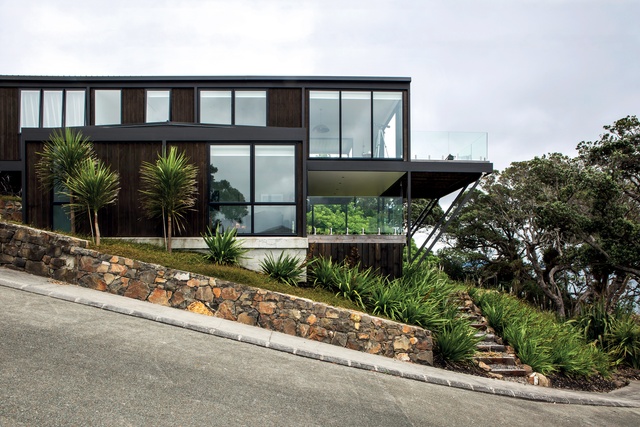
While this is a classic Box design that features the company’s recognisable post-and-beam skeleton, it has been customised to make maximum use of the building platform and to embrace the views. Rather than an unimaginative rectangular design, spaces are more organic in form.
The downstairs living room, for instance, is a pop-out that breaks the linearity, while floating decks are not, strictly speaking, cantilevered. “They are supported by metal struts,” says Dorrington. Teamed with stainless-steel cross bracing, they bring an industrial edge to the building.
Decks on the seaward end extend the living on both levels, but offer quite different perspectives. Downstairs, occupants feel immersed in a fairy-tale forest. The immediacy of a pōhutukawa grove floods the senses as light, seen through the branches, shimmers off the water’s surface beyond the trees. Upstairs, it’s all expansive skies and ocean, broken by distant humps of islands. “We can see Hen and Chickens Island and watch kayakers as they paddle from Waipu to Langs,” says Ford.
The material palette achieves a harmonious mix of contemporary crispness with textural touches that soften it. Stained Shadowclad on the exterior is paired with black aluminium joinery, which allows the home a humble presence. The existing rock wall on the perimeter was protected by a covenant. “We had to punch a hole in it for the driveway and front entrance but we mimicked its finish in the retaining walls by putting a stone facing over the timber structure,” says Dorrington. Landscaping, mainly with natives, ensures the dwelling sits easily in the natural environment.
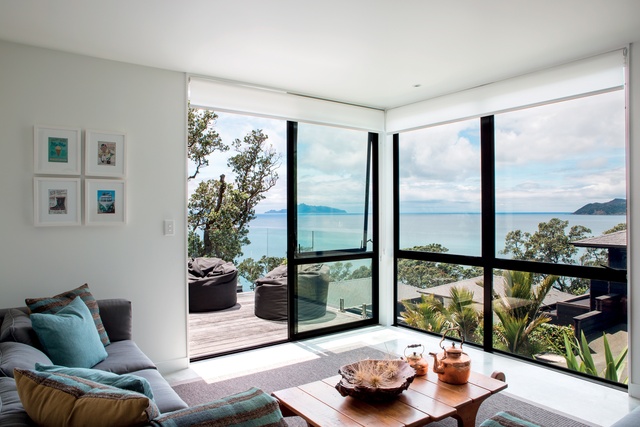
Inside, there are polished concrete floors downstairs and oak overlay flooring in the ‘Judy zone’. Battens that form a screen on the stairwell are another typical Box feature. Rooms with thoughtful proportions and full-height glazing allow connection to wrap-around views.
Such transparency and connection to the environment is not really what Ford initially envisioned when she first started looking for a holiday home. “At that stage, I really wanted a real ‘bachy’ bach but nothing came up. Now, I really like the box style because I think it suits the beach environment so well,” she says.
When it came to the kitchen, she had firm ideas about that as well. She replicated the exact layout of the one in her house in the city. The floor plan is identical and drawers and cupboards are allocated the same way — “it’s easier not to get confused”. Even the four-metre concrete bench is a carbon copy. “My nephews laughed at me, but why mess with a successful formula?”
Interior designer Anita Shirley from DesignChic was another ‘press repeat’ professional who Ford relied on to interpret her vision for a casual, seaside look. The desinger sourced special, custom-made items including the hand-beaten metal lampshades and handcrafted tables. She recommended investing in the rather lavish lounge suite. “It’s the best thing I could have done,” says Ford.
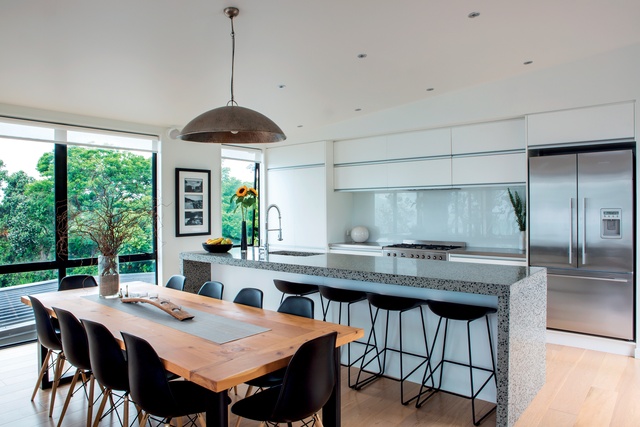
In many ways, this home is a continuation on a theme. “My parents had a similar set-up in the Bay of Islands when I was growing up,” explains Ford. “And my late husband taught photography so we have had many of his beach scenes enlarged to display in a few areas of the house. He’s very much a part of this, too.”
Sitting on the deck in solitude or surrounded by family is idyllic at any time of day, whether it’s breakfast at the table beneath the louvres in the outdoor living room or making pizzas in the alfresco wood-fired oven for dinner.
“With the right people around me, building and decorating has been such a neat experience. In fact, I enjoyed it so much that I can’t wait to do another project.”

Why did you choose LEDs above other types of bulbs? They are certainly more common in New Zealand now, so more viable for different applications. LEDs are far more energy efficient than halogens or incandescent bulbs but also they don’t heat up, so there is no fire risk. They last a lot longer, too. Most say they’ll give a lifespan of around 15,000 hours.
What about the type of light they give off? While halogens tend to have a warm, artificial light, LEDs throw out a more natural light as though you are in sunlight.
Where do you use LEDs specifically? Everywhere! We use them in strip-light form under high-level kitchen cabinetry, and beneath wall-hung vanities in the bathroom, usually on a sensor. We use them as recessed ceiling lights and in spotlights. The only place that we occasionally don’t use them is when we specify pendants that come with their own fixed fitting (and you replace the fitting not the bulb), or where we want the look of exposed filaments currently on trend — although ECC have some pretty cool LED filament bulbs now.
Click here to see more Houses Revisited. And sign up to our email newsletters to receive Houses Revisited straight to your inbox.
Note: These are stories from our archives and, since the time of writing, some details may have changed including names, personnel of specific firms, registration status, etc.

